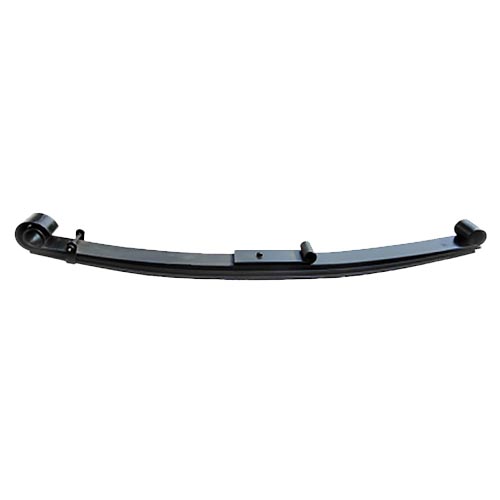Types of Trailer Springs
2024-05-23
Trailer springs are a vital component of trailer suspension systems, providing support, stability, and cushioning for the trailer and its cargo. They play a crucial role in absorbing shocks and vibrations encountered during towing, ensuring a smooth and safe ride for both the trailer and the towing vehicle. Here's an overview of trailer springs, including their types, functions, components, and considerations:
Types of Trailer Springs
1. Leaf Springs:
- Leaf springs, also known as "cart springs" or "semi-elliptical springs," are one of the most common types of trailer springs. They consist of multiple layers or "leaves" of spring steel stacked on top of each other and secured with a center bolt. Leaf springs are known for their durability, simplicity, and ability to carry heavy loads.
2. Coil Springs:
- Coil springs are cylindrical helical springs made of coiled spring steel wire. While less common in trailer suspension systems compared to leaf springs, coil springs offer advantages such as smoother ride quality, improved articulation, and more compact packaging.
3. Torsion Springs:
- Torsion springs, also known as "torsion axles," use a bar or tube to absorb and distribute forces between the trailer's wheels. Torsion springs are integrated into the axle assembly and provide independent suspension for each wheel, resulting in improved stability and ride comfort.
Functions
1. Load Support:
- Trailer springs bear the weight of the trailer and its cargo, distributing the load evenly across the suspension system and preventing excessive sagging or bottoming out.
2. Shock Absorption:
- Trailer springs absorb shocks and vibrations transmitted from the road surface, uneven terrain, or sudden movements, minimizing the impact on the trailer, cargo, and towing vehicle.
3. Wheel Alignment:
- Trailer springs help maintain proper wheel alignment and tracking by supporting the axle and controlling its movement relative to the trailer frame. This ensures stability and even tire wear.
4. Ground Clearance:
- Trailer springs determine the ride height and ground clearance of the trailer, preventing the undercarriage from scraping against obstacles or road debris.
Components
1. Main Spring Pack:
- In leaf spring assemblies, the main spring pack consists of multiple leaves of varying lengths and thicknesses, typically arranged in a tapered or parabolic configuration to distribute load and provide flexibility.
2. Center Bolt:
- The center bolt secures the individual leaves of a leaf spring assembly together and attaches the spring to the trailer frame or axle seat.
3. Spring Hangers and Shackles:
- Spring hangers and shackles are mounting brackets or links that attach the trailer springs to the trailer frame and allow for vertical movement and articulation as the suspension flexes.
4. U-Bolts and Hardware:
- U-bolts and associated hardware secure the trailer springs to the axle or axle seat, providing a sturdy connection and preventing the springs from shifting or dislodging during operation.
Considerations
1. Load Capacity:
- Choose trailer springs with an appropriate load rating and capacity to support the anticipated weight of the trailer and its cargo. Properly matched springs ensure optimal performance and longevity.
2. Spring Configuration:
- Consider the desired suspension configuration, such as single axle or tandem axle, and select trailer springs accordingly. The number and arrangement of springs affect load distribution, stability, and ride quality.
3. Maintenance:
- Regular inspection and maintenance of trailer springs are essential for ensuring safe and reliable operation. Check for signs of wear, fatigue, corrosion, or damage, and replace worn or damaged springs promptly.
4. Compatibility:
- Ensure that the trailer springs are compatible with the trailer's axle type, mounting configuration, and suspension geometry. Improperly matched or incompatible springs can lead to handling issues, premature wear, or structural damage.
Conclusion
Trailer springs are essential components of trailer suspension systems, providing load support, shock absorption, and stability for towing applications. By understanding the types, functions, components, and considerations of trailer springs, trailer owners, manufacturers, and maintenance professionals can make informed decisions regarding suspension setup, component selection, and maintenance practices to ensure safe and reliable trailer operation.



